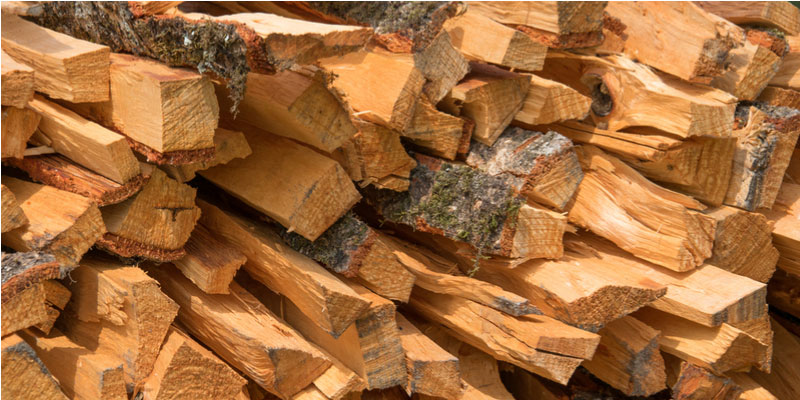The type of firewood you burn in your Toronto fireplace can have a huge impact on the quality of fire, how much creosote is produced, and how frequently your chimney needs to be cleaned or repaired. High quality firewood offers convenience, efficiency and safety. It also produces less smoke and creosote, which helps to reduce chimney and firebox maintenance.
The cheapest firewood is not always the best deal. In fact, ‘softwood’ is cheaper than ‘hardwood’ but it burns less efficiently and for less time before going out. Hardwoods burn for a lot longer before going out—hence why they typically have a higher price tag.
Firewood should be judged on three things:
- Thickness
- Dryness
- Piece length (in relation to the size of your firebox)
Some drawbacks to using the wrong type of firewood include:
- Polluting the atmosphere or your home
- Higher volumes of smoke and creosote that stick to your chimney flue and increase the risk of chimney fires
- Shorter/less efficient fire even when using the same amount of firewood
Different Types of Firewood
All wood has a similar chemical makeup. Although, dense hardwoods, such as oak or maple, produce more energy per cord, releasing more heat and producing longer lasting fires. Softer woods, such as birch, pine, and poplar, are still dense enough to be considered decent firewood, but they are better suited to less chilly days in the fall because they burn faster and do not produce as much heat.
Hardwoods are the most commonly used for firewood because of the fact they offer stronger and more efficient flames. Although, the latest fireplaces and furnaces work well with a wide variety of woods due to enhanced control of the combustion process.
Some of the best and longest burning firewood:
Ironwood
Rock elm
Hickory
Oak
Sugar Maple
Beech
Yellow birch
Ash
Red elm
Red maple
Softer woods that produce shorter burns but are still considered decent firewood, especially for the spring and fall:
Tamarack
Douglas fir
White birch
Manitoba maple
Red alder
Hemlock
Poplar
Pine
Basswood
Spruce
Balsam
Type of wood is important, but no matter what species it is, the density and moisture content will play a role in its ability to burn efficiently.
Avoid Wet or “Green” Firewood
Fireplace wood must be properly seasoned before you toss it into your firebox and set it aflame. Wood with too much moisture content causes inefficient burning. Even if wood “seems” dry, it might not be.
Freshly cut wood contains up to 80% moisture, while seasoned firewood never contains more than 20-25% moisture. Any wood containing more than 25% moisture is considered “green” or “wet,” and therefore inefficient to burn. Keep in mind, if wood is left outside in the elements it is more likely to rot before it fully dries out.
Green wood is free from cracks and the bark is firmly attached. That makes it more likely to sizzle at the edges when you light it on fire. Instead of using its energy to burn a brilliant fire, wet firewood wastes energy trying to remove moisture, as opposed to warming your home.
Additionally, moist firewood leads to greater production of smoke and creosote, as well as a greater potential for long-term issues and chimney fires.
Avoid Dirty Firewood
Firewood coated in mud or debris is going to burn less efficiently. Clean firewood offers the best option.
Firewood Size
The length and diameter of firewood is also important in relation to the size of your fireplace, stove, or furnace. Smaller pieces are easier to handle and are preferred over pieces that are too long for your firebox. If firewood is too long it can make fire stoking impossible. As a rule of thumb, firewood pieces should be around 3 inches shorter than the length of your firebox. Even for large fireboxes, smaller pieces are often preferred because they are easier to manage.

